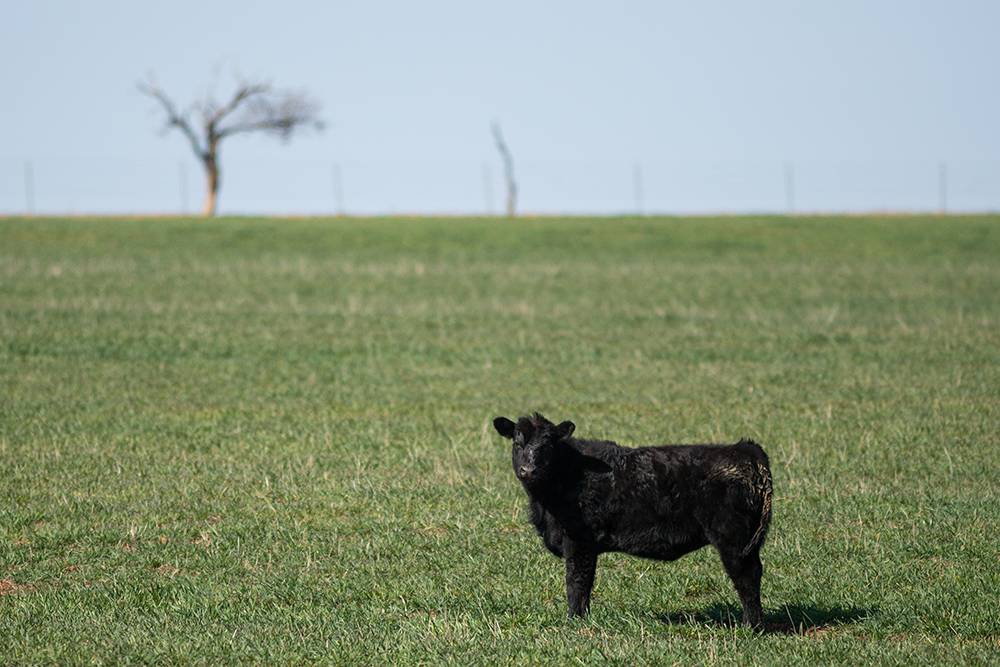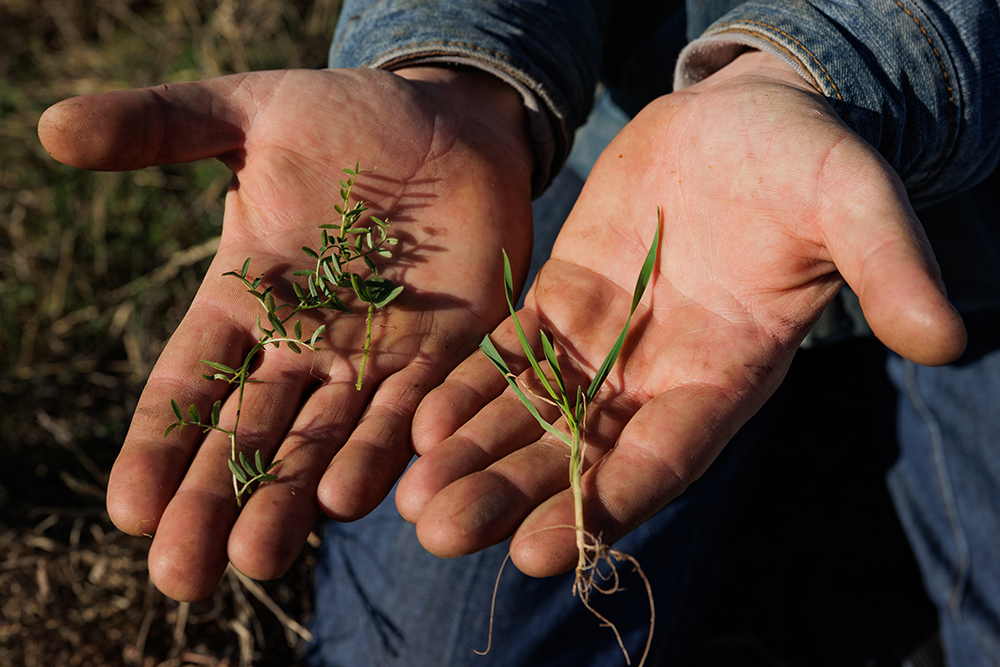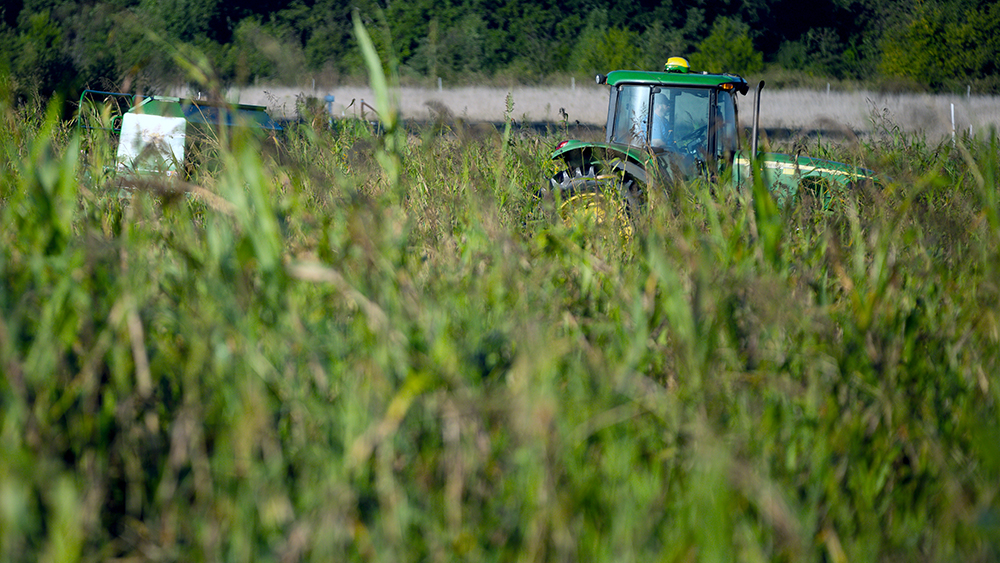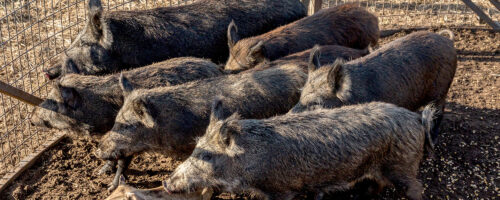How to extend grazing days with fall cover crops
Ranching advisor Jim Johnson breaks down a common question he hears from ranchers – how to incorporate fall cover crops into a grazing plan.
One of the most common questions ranchers ask Jim Johnson is how to supplement grazing needs while transitioning to regenerative practices. Instead of baling or buying hay, Johnson, senior regenerative ranching advisor at Noble Research Institute, suggests adding fall cover crops to their grazing plan.

Grazing and economic benefits of fall cover crops
From a grazing perspective, there are abundant reasons to add fall cover crops to your pastures, especially if you want to reduce your reliance on hay. But these cool-season cover crops add more to your ranch than grazing days. They can boost soil health, increase plant diversity and attract pollinators and other beneficial insects.
“In the first year, you may see an increase in insects and beneficial animals. But it may take a few years for a noticeable increase in earthworms and water retention or infiltration rates,” explains Johnson.
Noble’s Red River Ranch began incorporating fall cover crops a couple of years ago. Ranch manager Kevin Pierce plants cool-season crops in December and grazes them in February and March, when his warm-season pastures are dormant. Pierce adopted this practice for soil health benefits, but Johnson believes there’s an economic benefit to increasing grazing days, too. It’s a conversation that perks up ears in the Noble Land Essentials courses he teaches.
“The economics would be a lot better, for one, because you’re not paying to cut, rake, bale, and haul hay off, then haul it back and feed it to (the cattle),” he says. “You don’t have the shrink from it decomposing in a field, or the capital expenditure if it’s in a barn for storage.”

Determine if fall cover crops are right for your pastures
But before ranchers haul out their planting equipment, Johnson says it’s important to know why you’re planting the cover crop, and how you plan to use it.
“How does that grazing field fit into the rest of your grazing plan? Does it match a time when you have a forage need, and allow you to reduce hay feeding?” he asks. “Maybe instead of a cover crop, think of it as a second forage crop. I think it can still provide a lot of the same benefits to the ecosystem if we manage it properly when you graze a cover crop.”
If you know why you’re planting the cover crop, then you can begin to determine the right crop – or mix of crops – to plant. For example, a cover crop to increase plant diversity and add forages to your grazing plan might be a specific mix of grasses and legumes, while a cover crop to break up compacted soil or attract pollinators will focus on plants with deep root systems or flowering plants, respectively.
Johnson recommends connecting with a neighbor who uses cover crops or contacting your regional Cover Crops Council for more information about what works well in your area. If local producers aren’t an option, he suggests starting with a seed company website or catalogue. There are many good ones available, but his preference is Green Cover, based in south-central Nebraska.
“Many seed company websites have some kind of interactive tool to help producers determine the right mix for their operation,” Johnson says. “You might have to tweak their recommendation, but it gets folks started on a good path.”

Adopt best practices for planting fall cover crops
The easiest way to integrate a fall cover crop is to let the first frost stop the growth of your warm-season grasses, then plant your cool-season cover crop. Johnson acknowledges that access to a no-till drill – the tool he believes is the best way to plant a crop into pastureland – can be limited for many ranchers.
“You can broadcast or tread in with cattle, but it’s not as dependable and predictable as a no-till drill. Though, if you can get some good rain right after planting, you might get closer,” Johnson says. He also points out that broadcast seeding rates may need to be higher than those recommended when using a no-till drill. He knows ranchers may not like hearing this, but Johnson often responds to their requests for specific cover-crop advice or recommendations with, “it depends.” He knows every ranch is unique and every rancher employs a different philosophy about achieving their ranch goals. Generally, he encourages producers to experiment on a small section of their pasture to determine what works best for them.


Comment
Leave a Reply
4 comment on: "How to extend grazing days with fall cover crops""

Joe Kreger
August 20, 2024I am very interested in adding more fall cover crops by no-till-drilling into my bermudagrass in December. I have been able to do about 1/3 of the ranch so far successfully for two or three seasons. My challenge on the rest of the ranch is that there is no practical way to move the cattle off after drilling to let it establish. Is it still worth the effort and expense on bermudagrass if I can’t move the cattle off? Will it still grow enough to do some good – assuming appropriate stocking rate for warm season/early fall grazing on the bermudagrass?
Patrice Forsyth
August 20, 2024What cover crop will grow in “Red River sandy soil” both for improving soil and/or for grazing”. Seems no life in the sand.
Noble Research Institute
August 22, 2024If you do not see much life in your soil, even if it is Red River sandy soil, we recommend reviewing the 6 Soil Health Principles. Even in sandy soil, those principles apply and can improve your land over time! Diversity, using cover crops, is a great principle to implement. We recommend contacting your preferred seed provider to see what they recommend.
You may also like to read Observations of 20-Plus Cover Crop Species
Noble Research Institute
August 23, 2024Joe, thank you for sharing all those details, but there are still many variables. Have you considered our Noble Grazing Essentials course? It will be a great resource for you as you make these management decisions. Every course also includes a complimentary consultation session with our experts.